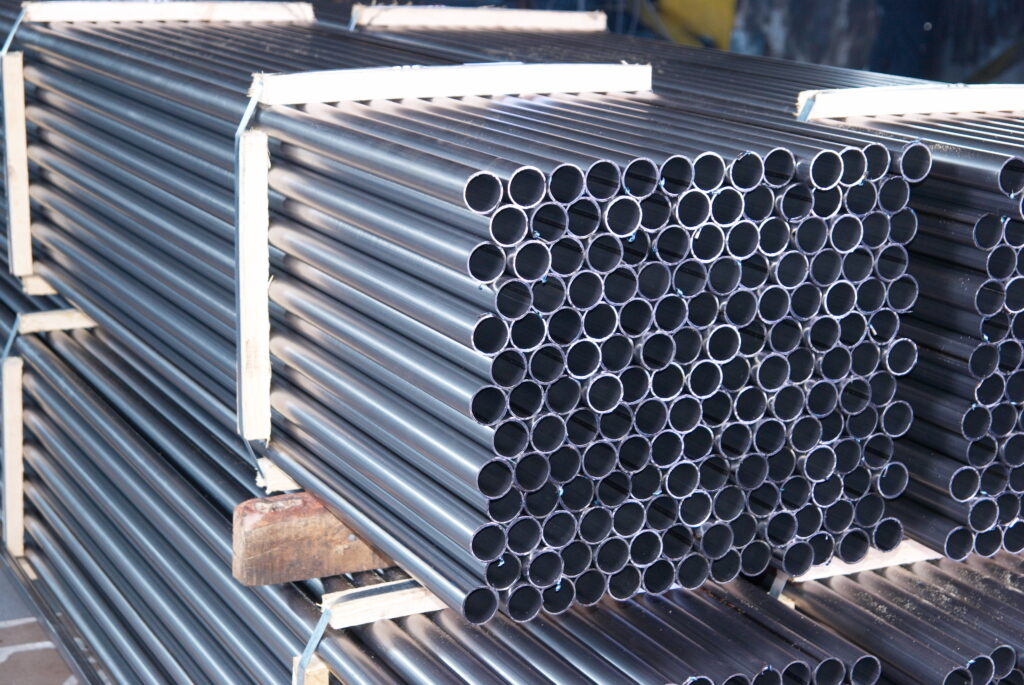In the world of stainless steel, the terms stainless steel pipe and stainless steel tube are often used interchangeably, but that’s a mistake. While both are cylindrical and made from the same corrosion-resistant alloy, they serve different purposes, are measured differently, and cater to unique industrial needs.
Whether you’re an engineer designing a stainless piping system, a fabricator working with tubing pipe, or a contractor trying to source quality metal pipe, understanding these differences will save time, money, and headaches. Let this blog be your guide through the stainless steel pipes and tubes of the industrial world, brought to you by Millennium Specialty Alloys, your trusted source for stainless steel supply. Click here to view our catalogue of stainless steel tube and stainless steel pipe.
What Makes a Tube a Tube and a Pipe a Pipe?
Let’s start with the basics. While stainless steel pipe and stainless steel tube might look nearly identical at first glance, their distinctions go beyond appearances and understanding those differences is essential for choosing the right material for your project. The key difference lies in how they’re measured and the specific roles they play in a system:
-
Stainless Steel Pipe: Measured by inner diameter (ID) and wall thickness, often referred to as its “schedule.” That’s because the primary function of pipe is to transport fluids, gases and even steam so the focus is on how much can flow through it.
-
Stainless Steel Tube: Measured by outer diameter (OD) and wall thickness, with a strong emphasis on exact dimensions. This is crucial in applications that require precision and uniformity, such as structural components, medical equipment, or architectural installations.
Think of it this way: if you’re assembling a stainless piping system to move water through a factory or fuel through a processing plant, pipe is your best bet. But if you’re crafting a sleek staircase railing, an instrument frame, or an industrial support brace, you’ll want the dimensional accuracy of stainless steel tube. The differences don’t stop there, stainless steel tubing typically boasts tighter manufacturing tolerances, which means its dimensions are more exact which is ideal for when fit and finish matter. Tubes often come with a more refined surface finish, including polished or brushed options, making them both functional and visually appealing. Pipes, by contrast, are generally more rugged, with looser tolerances and a mill finish suited for heavy-duty utility work.
In short: pipe is about flow, tube is about form. Both are foundational in their own way, but choosing the right one will ensure your system is efficient, safe, and built to last.
Here’s where you’ll find Stainless Steel tube and Stainless Steel tubing doing the heavy lifting:
-
Pharmaceutical & Food Processing
In these highly regulated environments, cleanliness is everything. The smooth interior surfaces of stainless steel tube reduce the risk of bacterial growth, making it ideal for sanitary systems that transport water, chemicals, or consumables. Whether in a bottling line or cleanroom, tubing pipe ensures purity and compliance. -
Oil & Gas
Extreme temperatures. Corrosive fluids. High pressure. This is where stainless steel tubing proves its worth, delivering reliability in pipelines, offshore rigs, and stainless piping systems used for transporting oil, gas, and chemicals. It’s also preferred for use in heat exchangers where efficiency and longevity are critical. -
Automotive & Aerospace
When weight matters and strength can’t be compromised, stainless steel tube is a top choice. From fuel and brake lines to chassis reinforcements and exhaust systems, this metal pipe handles vibration, heat, and stress without missing a beat. -
Architecture & Construction
In the built environment, beauty meets performance. A polished stainless tube offers the perfect combination of structural integrity and visual appeal. You’ll find it in handrails, curtain walls, sunshades, and exposed structural elements where aesthetics and longevity are equally important. -
Power Generation & Industrial Plants
From breweries to nuclear facilities, industrial pipe and stainless steel tubing are key to maintaining consistent performance in mission-critical systems. Whether it’s transferring steam, chemicals, or coolant, these components play a vital role in keeping operations running smoothly.
At Millennium Specialty Alloys, we understand that no two projects are the same. That’s why our extensive stainless steel supply includes everything from standard steel pipe sizes to precision-engineered stainless steel tube and custom-cut tubing pipe. We work with industries that can’t afford failure and deliver material that exceeds expectations, every time.
Cutting Stainless Steel Pipe Like a Pro
So, you’ve sourced high-quality stainless steel pipe, now what? Cutting it cleanly is essential to preserve its integrity and prevent contamination in your system.
Here’s how to cut stainless steel pipe safely and efficiently:
Tools You Can Use:
- Tube Cutter: Ideal for smaller diameter stainless tubing.
- Reciprocating Saw (Sawzall): For larger steel pipe sections.
- Angle Grinder: Offers fast cuts but creates more heat-use with caution.
- Chop Saw with Abrasive Wheel: Accurate for bulk cutting, but watch for burrs.
- Cold Saw or Band Saw: The gold standard for precision cuts.
Pro Cutting Tips:
- Clamp firmly to avoid vibration or warping.
- Use lubrication when using grinders or saws to reduce heat.
- Deburr edges after cutting to remove sharp remnants.
- Wear PPE, cutting stainless produces sparks and shards.
Cutting corners here (pun intended) can compromise the performance of your stainless piping system. Always prioritize safety and precision.
Choosing Between Pipe, Tube, or Other Metal Stock
If you’re new to the metal pipe world, it can be overwhelming to choose between Stainless Steel pipe, tube, or other forms like sheet or bar. Here’s a quick guide:
| Application | Choose | Why |
|---|---|---|
| Fluid/Gas transport | Stainless steel pipe | Designed for pressure and flow |
| Structural support | Stainless steel tube | Precise dimensions & polished finish |
| Machined parts | Steel Bar Stock | Solid and versatile |
| Fabrication & cutting | Steel Sheet/Plate | Easy to weld and form |
Think of pipe as your plumber’s best friend and tube as the architect’s favourite material. Both are critical, but the context is key. Still not sure? Millennium Specialty Alloys provides expert consultation to match your project with the perfect stainless steel supply.
Final Thoughts: Your Stainless Steel Solution Starts Here
Whether you’re speccing out a 20-ton industrial pipe order or need just a few feet of Stainless Steel tubing for a fabrication project, the right supplier makes all the difference. At Millennium Specialty Alloys, we don’t just sell metal pipe—we provide solutions that build, support, and elevate industries across North America.
Not sure which size or specification you need? Our team is happy to walk you through options and provide a helpful conversion table to translate dimensions, schedules, and wall thicknesses across systems.
Ready to talk stainless? Explore our product catalogue or contact our team for custom orders and expert insight. Let us be your stainless steel guide, from selection to delivery and beyond.


